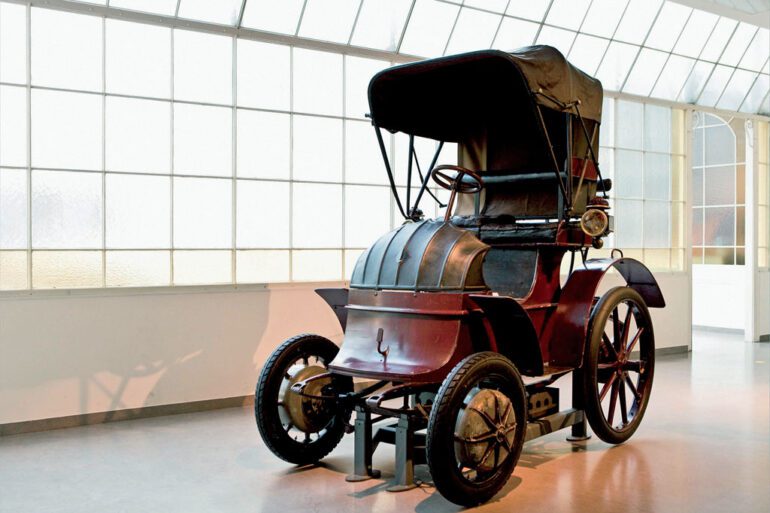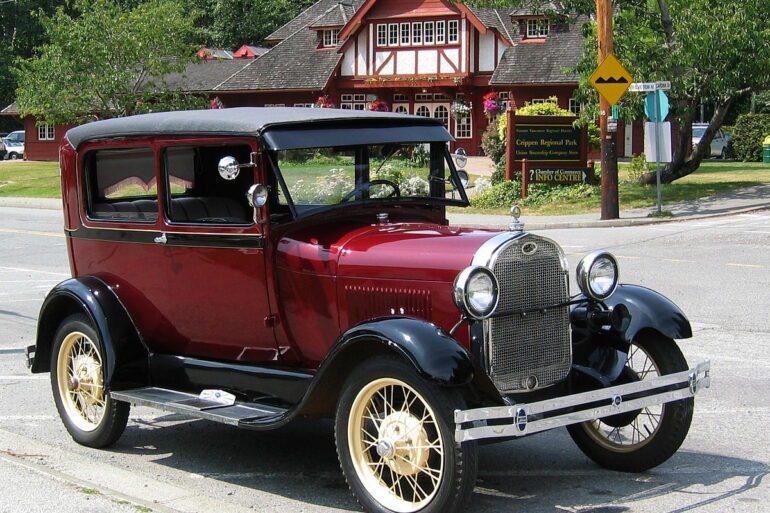Best Ferrari Race Cars Ever
Updated September 2023 by Eduardo Zepeda

Born from racing, Ferrari has created some of the best race cars in motorsport history
About Our Selections
Ferrari, a company with its roots in racing, has become a symbol of the transformative potential of sustained dedication to automotive performance and beauty on and off the track.
An unquenchable thirst for technological breakthroughs powers the Ferrari race cars. The Prancing Horse brand has produced enduring racing icons by combining groundbreaking technology with unparalleled artisanal craftsmanship in the ever-evolving world of motorsports.
Cars that surpass the competition have helped cement Ferrari's reputation as a racing icon. The Maranello automaker is known for setting ambitious targets and expectations when designing race cars and often exceeding them by pushing boundaries.
Ferrari Tipo 500
The Ferrari that started it all
Why We Picked It:
During the 1950s, the Ferrari Tipo 500, also known as the Ferrari 500, made quite a splash in the racing world. This remarkable car was designed to be lightweight and agile, giving it an edge on the track.
The Tipo 500 housed a 2.0-liter four-cylinder engine underneath its sleek aluminum bodywork. Despite its size compared to later Ferrari models, this engine played a crucial role in maintaining the car's lightweight construction while still delivering impressive performance.
Initially, the 500 competed in Formula 2 races, consistently emerging victorious. Its exceptional engineering and driving capabilities were showcased through wins and championship titles.
The triumphs of the 500 in Formula 2 prompted Ferrari to adapt it for Formula 1 racing. With Alberto Ascari behind the wheel, this exceptional car secured back-to-back Formula 1 World Championships in 1952 and 1953.
The emergence of the Tipo 500 marked a milestone for Ferrari as it transitioned from a road car manufacturer to an influential powerhouse in competitive racing. Ferraris's legacy as a racing team was firmly solidified through the 500's achievements in Formula One.
Specifications:
Price: $5,000,000-$100,000,000
Engine: 2.0L Inline-Four
Power: 185 hp
Torque: N/A lb-ft
Transmission: 4-Speed Manual
Curb Weight: 1,234 lbs
Highlights:
The Tipo 500 gained a reputation for being durable and dependable, enabling it to excel in demanding endurance races such as the Mille Miglia and the Carrera Panamericana.
The 500 initially competed in Formula 2 racing, consistently outperforming its rivals. It won numerous races and championships in this category, showcasing its exceptional engineering and driving capabilities.
Learn More:
Ferrari 312 T
The most successful F1 car ever
Why We Picked It:
In the late 1960s and early 1970s, Ferrari failed to win any Formula 1 championships and eventually abandoned its legendary endurance sports car category in 1973. However, they were about to create the most successful car in Formula One history, thanks to the genius design of Mauro Forghieri.
The 312T was innovative in many ways; its inboard front suspension and transversely placed gearbox helped it achieve a low polar moment of inertia by moving the transmission forward of the rear axle. After extensive testing, the 312T debuted at the 1975 South African Grand Prix with drivers Niki Lauda and Clay Regazzoni.
The 312 T was known for its reliability, allowing it to finish races consistently and fast enough to win, thanks to its 3.0-liter V12 engine, which produced around 495 horsepower.
Between Lauda and Ragazzoni, they won six races with the 312T in 1975, earning them both Drivers' and Constructors' titles. Throughout its five-year lifespan, the 312T would go through numerous iterations, with the final product winning 27 races, four Constructors' Championships, and three Drivers' Championships.
Specifications:
Price: $2,00,000-$5,000,000
Engine: 4.8L V12
Power: 495 hp
Torque: 236 lb-ft
Transmission: 5-Speed Manual
Curb Weight: 1,268 lbs
Highlights:
Mauro Forghieri created the Ferrari 312 T, a Formula One car that Ferrari produced from 1975 to 1980. It was the most successful car design in Formula One, winning 27 races, four Constructors' Championships, and three Drivers' Championships.
The greatest Formula 1 drivers, including Niki Lauda, Clay Regazzoni, and Jody Scheckter, drove the 312 T, helping to make it a successful race car.
Learn More:
Ferrari F2004
Bred for winning
Why We Picked It:
The Ferrari F2004 is one of the most iconic race cars in Formula One history because it epitomized speed, precision, and engineering prowess.
Introduced for the 2004 F1 season, it won 15 of 18 races and helped Michael Schumacher win his seventh World Drivers' Championship. But what exactly was it about the F2004 that made it so successful?
Ferrari produced the F2004, a Rory Byrne-designed Formula One car, between 2004 and 2005. A naturally aspirated 3.0-liter V10 engine generating 900 horsepower and 485 lb-ft of torque was the secret weapon of the F2004.
Its sleek and aerodynamically efficient design generated a lot of downforce, which translated to excellent cornering traction. The F2004's success can be attributed in large part to the exceptional grip and stability provided by the Bridgestone tires that were developed specifically for the car.
The F2004 was an unstoppable force for Ferrari, resulting in 15 race victories, 14 pole positions, and 10 podium finishes in 18 races. This factored into Michael Schumacher's last Drivers' Championship, his seventh overall.
Specifications:
Price: $1,800,000-$2,900,000
Engine: 3.0L V10
Power: 900 hp
Torque: 390 lb-ft
Transmission: 7-Speed Sequential Semi-Automatic
Curb Weight: 1,334 lbs
Highlights:
The F2004's outstanding dependability enabled it to complete races, minimizing the chances of breakdowns, allowing Michael Schumacher and Rubens Barrichello to exploit the cars' capabilities with their exceptional talent.
The F2004 built upon the highly successful F2002, refining its design and performance.
Learn More:
Ferrari 250 Testa Rossa
A racing masterpiece
Why We Picked It:
The Ferrari 250 Testa Rossa is undoubtedly one of the best Ferraris in history. Its nickname, – Red Head – comes from the Corsican red color that covers both cylinder heads of its V-eight eight-cylinder engine. It was created in the late 1960s to compete in the Sport Prototype Championship against Aston Martin or Maserati rivals.
This model's incredible track record—it won the Targa Florio at Le Mans—and the fact that only 22 units of this competition car were produced make this Ferrari a jewel highly appreciated by collectors.
The Ferrari 250 Testa Rossa has a 3.0 V12 engine producing 300 horsepower redlining at 7,200 rpm. Drum brakes, a sturdy chassis, a four-speed gearbox, and a live-axle rear end suspended on leaf springs were all that this most lauded of endurance racing cars could manage in its early years.
Without a doubt, and together with the design of its body with its characteristic pontoons, the Testa Rossa's engine was the protagonist, allowing this 1,760-pound Ferrari race car to reach approximately 160 mph.
Specifications:
Price: $20,000,000-$40,000,000
Engine: 3.0L V12
Power: 300 hp
Torque: 281 lb-ft
Transmission: 4-Speed Manual
Curb Weight: 1,760 lbs
Highlights:
Sergio Scaglietti created the Testa Rossa's elegant and aerodynamic bodywork, featuring the distinctive red valve covers that gave it its name. This design has become an enduring symbol of classic Ferrari aesthetics.
The Testa Rossa is praised for its remarkable success in motorsport, timeless design, powerful V12 engine, innovative engineering, and enduring legacy as an iconic classic car.
Learn More:
Ferrari 195 S
Ferrari's first successful coupe
Why We Picked It:
The Ferrari Le Mans Berlinetta, built for the 1950 24 Hours of Le Mans, was the company's first successful coupe. Neither of the two cars entered that year made it to the finish line, but after being modified to 195 S standards, they won the 1950 Mille Miglia.
Ferrari upgraded the 166 MM in 1950 by adding a 195 cc single cylinder and a larger bore. The resulting 2341 cc engine could generate between 160 and 170 hp. Alberto Ascari and Giannino Marzotto introduced the 195 S engine at the 1950 Giro di Sicilia.
Superleggera Touring, based in Milan, created the lightweight and aerodynamic bodies for the Le Mans Berlinetta. The 166 MM Barchetta inspired the aluminum body, supported by thin steel tubing.
Many 166 MMs were modified to accommodate the larger engines; Giannino Marzotto and ex-Alfa Romeo racing driver Martino Severi won the 1950 Mille Miglia in a 195 Sport. They used a newly developed 2.3-liter V12 in a privately entered 166 Touring Barchetta. The Ferrari 195 S is an exceptional car and one of the most significant Ferraris ever made.
Specifications:
Price: $5,000,000-$10,000,000
Engine: 2.4L V12
Power: 170 hp
Torque: 152 lb-ft
Transmission: 5-Speed Manual
Curb Weight: 1,720 lbs
Highlights:
The 195 S was one of the most successful Ferraris of its era, winning the Mille Miglia in 1950 and 1953. It was also very popular with collectors, and today, it is one of the most valuable Ferraris ever made.
The 195 S's bodywork was visually appealing and aerodynamically effective, thanks to Carrozzeria Vignale and Carrozzeria Touring's designs. Its sleek and elegant lines reflected the era's classic Italian sports car design.
Learn More:
Ferrari 458 Italia GT2
A dominating racing machine
Why We Picked It:
The 458 Italia GT2 was developed by Ferrari specifically for GTE Endurance racing. During the 2012, 2013, and 2014 seasons of the FIA World Endurance Championship, the team won three GT Constructors' Titles and three GTE PRO Team trophies in a row.
The Ferrari 458 Italia GT2 is a track-ready variant of the standard 458 Italia road car. Extensive wind tunnel testing ensured the vehicle's aerodynamic efficiency regarding downforce and drag. These aerodynamic improvements helped improve the car's handling and responsiveness around corners.
The 458 Italia GT2 relies on a 4.5-liter V8 engine, which may generate between 550 and 600 hp depending on the rules and weight distribution. This engine is renowned for high revs and produces impressive output for a GT2-class vehicle.
The GT2 has taken first place in its class at the 24 Hours of Le Mans four times: in 2012 and 2014 in the GTE PRO division and 2015 and 2016 in the GTE AM division. It won the Team and Drivers Championships in its class for five consecutive years in the European Le Mans Series.
Specifications:
Price: N/A
Engine: 4.5L V8
Power: 550 hp
Torque: 398 lb-ft
Transmission: 7-Speed Sequential
Curb Weight: 2,745 lbs
Highlights:
The 458 Italia GT2 was a limited-production racing car, and Ferrari only sells it to private racing teams and not individual customers. This exclusivity adds to its allure and makes it a coveted choice for professional racing teams.
The car is built around a lightweight, stiff aluminum spaceframe chassis, providing excellent rigidity and handling characteristics. The chassis is designed for durability and the rigors of endurance racing.
Learn More:
Ferrari 250 GTO
The greatest Ferrari of all time
Why We Picked It:
The Ferrari 250 GTO is the pinnacle of road racers. In addition to its unparalleled racing record, the automobile is readily identifiable due to its classic proportions and distinctive design. Because of its innovative style, impressive performance in road racing, and limited production (only 36 Ferrari 250 GTOs were ever made), the 250 GTO is considered the most famous and valuable Ferrari ever.
The Ferrari 250 GTO's aerodynamic design and potent hand-built V12 engine allowed it to reach an incredible top speed of 170 mph. Giotto Bizzarrini relied significantly on wind tunnel testing and did a fantastic job with the GTO's exterior design.
The 250 GTO racing pedigree includes victories in the Tour de France in 1963 and 1964, extending Ferrari's nine-year winning streak. The GTO also clinched GT class victories in the Targa Florio in 1962, 1963, and 1964 and won the Tourist Trophy at Goodwood in 1962 and 1963. Two of its most notorious victories were the Le Mans 24 Hours and Nürburgring 1000 km in 1962 and 1963, respectively.
Specifications:
Price: $30,000,000-$70,000,000
Engine: 3.0L V12
Power: 302 hp
Torque: 216 lb-ft
Transmission: 5-Speed Manual
Curb Weight: 2,229 lbs
Highlights:
The Ferrari 250 GT SWB-inspired design by Sergio Scaglietti is a work of art. The timeless and alluring design results from its aggressive yet refined proportions, unique front grille, and curved body.
In terms of rarity, racing accomplishments, compelling design, incredible performance, and historical significance, few cars can compare to the Ferrari 250 GTO.













